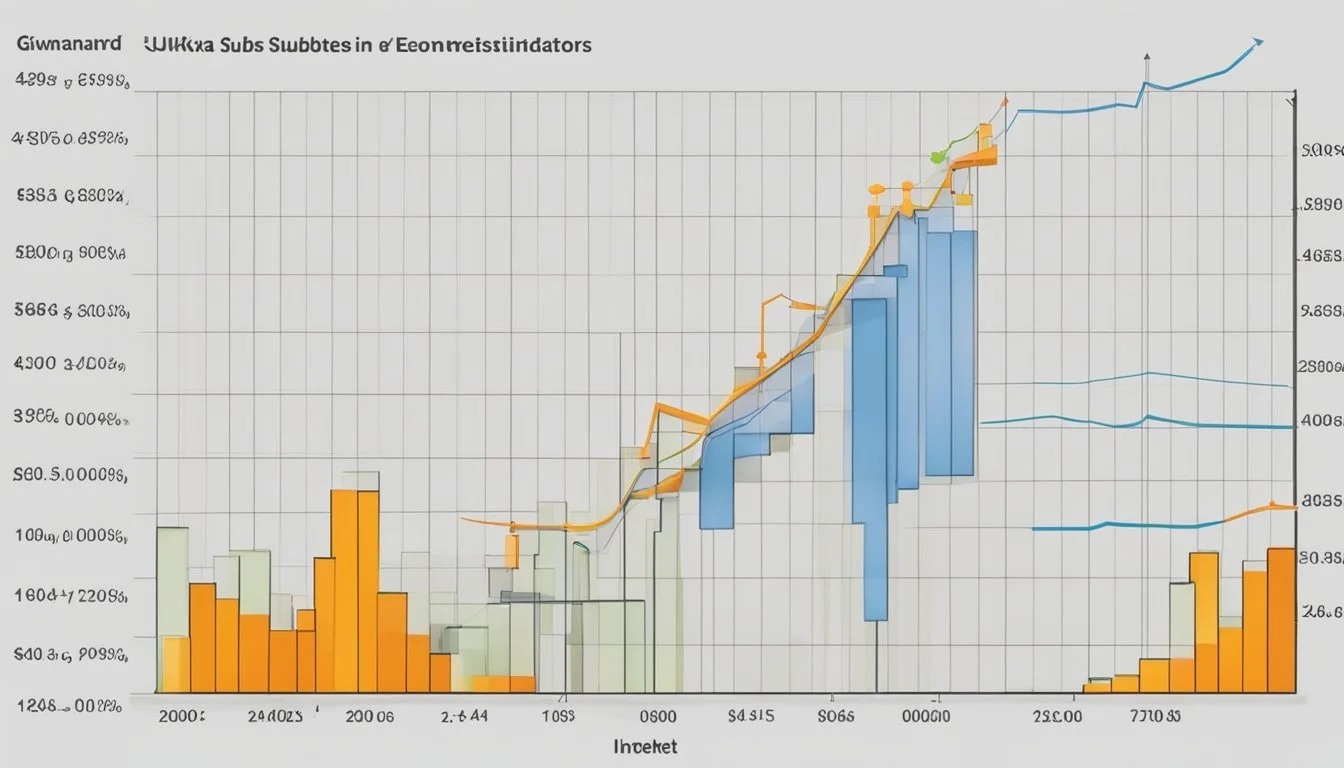Kuka Substitutes
Top Alternatives for Robotic Automation
When considering alternatives to KUKA robots, several noteworthy competitors emerge in the industrial robotics landscape. Companies like FANUC, ABB, and Rockwell Automation offer compelling options that rival KUKA in terms of precision, speed, and integration capabilities. Each of these manufacturers has carved out a strong segment in the market with their unique strengths and innovations.
For instance, FANUC is celebrated for its superior path accuracy and speed, making it an excellent choice for complex machining tasks. ABB, on the other hand, is known for its versatile automation solutions across various industries, including automotive and electronics. Rockwell Automation's strong focus on industrial automation and information technology provides a robust framework for building intelligent robotic systems.
Other competitors such as Teradyne and Siemens also bring advanced technologies to the table, catering to diverse industrial needs. By exploring these alternatives, manufacturers can identify the best fit for their specific operational requirements, ensuring enhanced productivity and efficiency.
Overview of Kuka
Kuka, a German industrial robotics company, has made significant strides in the field since its inception. From its beginnings to its current global influence, Kuka continues to shape the future of robotics.
Origin and Evolution of Kuka
Kuka was founded in 1898 in Augsburg, Germany, by Johann Josef Keller and Jakob Knappich. Initially, the company focused on acetylene production for lighting. Over time, it diversified and began specializing in welding and cutting technology. By the 1970s, Kuka had introduced the world's first industrial robot with six electromechanically driven axes, marking a pivotal shift towards automation.
This innovation set the foundation for Kuka's ongoing development. Today, Kuka offers a wide range of robotic solutions, including collaborative robots (cobots) and automated production systems.
Kuka's Global Impact on Robotics
Kuka has established itself as a leader in the robotics industry. Its robots are used across various sectors such as automotive, healthcare, and logistics. Models like the KR QUANTEC and KR IONTEC series are notable for their versatility and efficiency.
The company's technology facilitates tasks such as welding, assembly, and material handling. Additionally, Kuka's commitment to research and development ensures continuous advancements in robotics. This global influence highlights Kuka's role in driving the industry's progress.
Understanding Kuka Robots
Kuka robots are renowned for their flexibility and precision in various industrial applications. These robots, such as the KR 22 R1610, are widely used for tasks ranging from welding to assembly.
Controller:
Kuka robots utilize the KRC4 controller, which offers advanced motion control and intuitive programming. It ensures smooth operation and optimal performance, balancing power with precision.
Programming:
The programming of Kuka robots is built on a robust, intuitive framework. Using KUKA Robot Language (KRL), users can efficiently program movements and tasks. This language is designed for logical structuring, allowing for easy modifications and updates.
Char:
These robots are characterized by their strong build and reliable operation. They maintain high accuracy and repeatability, essential for tasks requiring strict adherence to specifications.
Real-World Applications:
In real-world scenarios, Kuka robots are employed in automotive manufacturing, CNC milling, and many other industries. Their adaptability makes them suitable for both large-scale productions and specialized tasks.
Efficiency:
Kuka robots are designed for high efficiency, improving cycle times and reducing operational costs. This efficiency is a result of continuous software updates and technological advancements, keeping the robots at the cutting edge of automation.
Simplicity and Training:
Despite their advanced capabilities, Kuka robots are user-friendly. The programming interface is simplified, catering to both experienced programmers and novices.
Innovative Features:
Features such as optimal motion control and cycle time optimization contribute to their popularity. These elements ensure that the robots operate at peak efficiency, enhancing productivity in manufacturing environments.
Kuka robots exemplify a blend of durability, efficiency, and advanced technology, making them a preferred choice in the robotics industry.
Substitute Solutions for Kuka Robots
Businesses looking for alternatives to Kuka robots have several viable options that vary by region, sector, and cost-efficiency. These substitutes offer different features and advantages tailored to specific needs.
Regional Alternatives
Regional alternatives to Kuka robots include companies like ABB, FANUC, and Yaskawa Electric.
ABB is known for its precision and reliability, especially in Europe. FANUC, a leading Japanese company, excels in user-friendly operations, making it a frequent choice in Asia. Yaskawa Electric also hails from Japan and is renowned for its high-performance automation solutions. Each of these alternatives is designed to meet regional demands effectively, ensuring versatility and efficiency in various applications.
Sector-Specific Alternatives
When it comes to sector-specific solutions, several companies stand out. In the automotive sector, Hirata offers comprehensive manufacturing line systems, featuring automated assembly lines for engines and transmissions.
Nachi-Fujikoshi is another strong contender, providing robotics well-suited for high-precision tasks in manufacturing. For tech-heavy industries, Rockwell Automation provides advanced robotics with integrated software solutions. Each of these companies addresses specific industry needs, making them suitable substitutes for Kuka in their respective fields.
Comparing Price and Efficiency
The comparison of price and efficiency among these alternatives often highlights FANUC, ABB, and Nachi-Fujikoshi as top contenders. FANUC robots are known for their cost-effectiveness, making them a budget-friendly option without sacrificing performance.
ABB offers competitive pricing with a focus on durability and long-term savings. Nachi-Fujikoshi provides high-precision robots at a reasonable price, striking a balance between quality and affordability.
Tables or detailed charts can often help businesses compare initial costs, maintenance expenses, and operational efficiencies to make informed purchasing decisions.
Integration Strategies
Effective integration of KUKA substitutes can be achieved through careful planning and continuous optimization of production cells. These strategies ensure seamless operation and enhanced productivity.
Planning and Implementation
Planning is crucial for successful integration. It involves assessing current systems, defining integration goals, and selecting appropriate substitutes. Detailed documentation of technical requirements and compatibility checks is essential to avoid disruptions. Establishing a timeline and milestones helps in tracking progress and ensuring timely implementation. Collaboration between teams and stakeholders is vital for addressing challenges and ensuring smooth deployment.
Optimizing Production Cells
Optimizing production cells involves integrating substitutes with minimal disruption to existing processes. It includes configuring equipment to work harmoniously and fine-tuning workflows to enhance efficiency. Regular monitoring and data analysis help in identifying bottlenecks and implementing improvements. Training staff on new equipment and protocols ensures smooth transition and maximizes productivity. Continuous feedback loops allow for iterative enhancements, ensuring long-term success.
Economic and Market Analysis
KUKA's position in the robotics and automation markets can be influenced by various economic factors and geopolitical conditions. Understanding recent market trends and how international events, like tensions involving Russia, impact the company is essential.
Market Trends
The automation and robotics industry has seen significant growth, driven by technological advancements and an increasing need for efficiency in manufacturing.
KUKA, as a major player, benefits from this trend. They offer a wide range of robot systems and production machines tailored to different industrial applications.
Investment trends show steady interest as the company focuses on integrating standardized systems into customized solutions, appealing to sectors beyond automotive manufacturing.
Their product portfolio diversification also mitigates risks associated with market fluctuations in any single industry.
Impact of Geopolitical Factors
Geopolitical events, including international conflicts and trade policies, significantly influence KUKA’s market position.
For instance, tensions between Russia and other countries can disrupt supply chains and investment flows, affecting KUKA's operations and profitability.
Trade agreements and tariffs also play a crucial role. Changes in these policies can alter the cost structures and market accessibility for KUKA’s products.
The company must navigate these challenges by adapting its strategies to stay competitive while maintaining production and delivery efficiency globally.
Fluctuations in currency exchange rates and economic sanctions can further impact financial outcomes, making it essential for KUKA to maintain flexible and responsive operational strategies.
Technological Innovations and Advancements
Kuka, a leader in robotics and automation, continuously pushes the boundaries of technology with their cutting-edge advances. These innovations not only enhance efficiency but also pave the way for future developments in industry and research.
Cutting-Edge Developments
KUKA has introduced several innovative technologies enhancing robotic capabilities. The LBR iisy cobot, for instance, showcases sensitive handling and advanced programmability. This cobot is provided to finalists of the KUKA Innovation Award, supporting rapid development in automation.
Moreover, robot-based Friction Stir Welding (FSW) technology addresses complex production challenges in e-mobility. This includes advanced clamping technology and automated tool change systems, ensuring precision and operational efficiency. These developments underscore KUKA's commitment to integrating advanced engineering solutions in automation.
Volker Schmirgel, Head of Technology and Innovation Center at KUKA, emphasizes the importance of collaboration with the research community to drive innovation. The company's ongoing investment in technology transfer from research to industry illustrates their dedication to maintaining a pioneering status in the field.
Future Projections
Future projections for KUKA's technological advancements indicate a continued focus on enhancing collaborative robotics and automation systems. With the success of the LBR iisy cobot and other innovations, KUKA aims to develop even more intuitive and user-friendly robotic solutions.
Investment in research and development is expected to rise, emphasizing technologies like artificial intelligence (AI) and machine learning (ML). These will likely transform how robots interact with their environments, making them more adaptive and efficient.
Additionally, the progression of robot-based automation in specialized fields such as 3D welding and e-mobility will further refine precision manufacturing processes. These advancements, powered by KUKA's engineering expertise, are set to revolutionize production lines and improve technological applications in various industries.
Conclusion and Recommendations
Kuka provides versatile industrial robots, but several alternatives also offer robust automation solutions.
Hirata offers manufacturing line systems and robots, which cater well to the automotive industry. Their products include automated assembly lines for engines and transmissions.
When planning for robot integration, companies should evaluate:
Needs Analysis: Determine specific requirements, such as the type of tasks (assembly, welding, etc.).
Budget: Assess the financial investment and ROI.
Compatibility: Ensure the robots integrate well with existing systems.
Universal Robots specialize in collaborative robots (cobots), providing flexible automation without extensive safety setups. This can be advantageous for SMBs.
Recommendation:
Evaluate Alternatives: Compare features and costs.
Trial Runs: Conduct pilot tests with shortlisted robots.
Training: Invest in operator training to maximize productivity.
ABB offers a wide range of robots with applications in electronics, automotive, and metal fabrication sectors. Their precision and reliability are noteworthy.
Another substitute, Fanuc, is renowned for its high-speed robotics, suitable for tasks requiring rapid cycles and precision.
Consider Overall Integration Costs: Include maintenance, software updates, and operator training.
By thoughtfully comparing Kuka with these alternatives, businesses can make informed decisions that align their needs with the capabilities of industrial robots. Effective planning will ensure seamless integration and optimize production efficiency.






